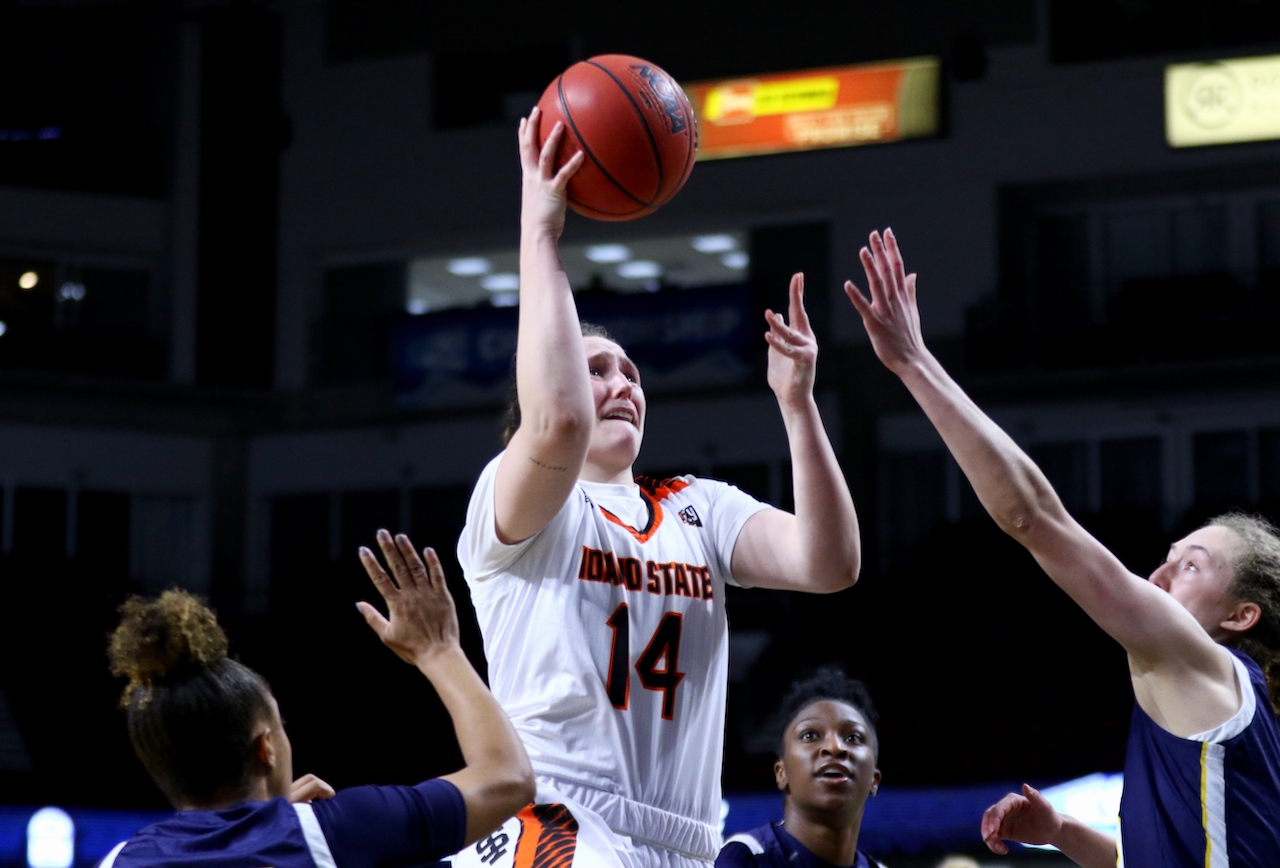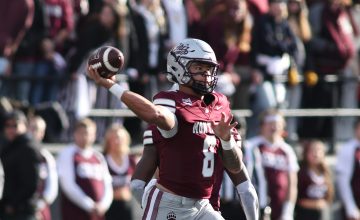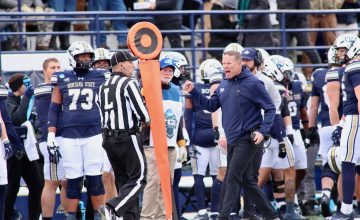The celebration started early for the Idaho State women.
In truth, it could have begun any time after Estefania Ors’ volcanic first half put the Bengals up 44-25 heading into the locker room against archrival Idaho in the 2020-21 Big Sky Conference women’s basketball title game.
Things actually kicked off with five seconds left on the clock, when confetti prematurely blanketed the floor at the Idaho Central Credit Union, turning the final ticks of the Bengals’ 84-49 win into a party. After the buzzer, players made snow angels on the floor, danced around with pieces of net behind their ears and posed for pictures with smiles stretching from Boise all the way back to Pocatello.
It was a storybook ending for ISU’s battle-tested roster, one that cemented the group of girls from around the globe as one of the best teams the Big Sky has ever seen.

Ors, a fifth-year senior from Valencia, Spain, who came back after suffering a season-ending knee injury in 2019-20, finished the title game 8 of 9 for 21 points and was named the tournament MVP, adding to a trophy cabinet that already contained Big Sky Freshman and Reserve of the Year awards.
In their first-round NCAA Tournament game in San Antonio, the No. 13 Bengals led Kentucky by double digits in the first quarter before falling 71-63 to SEC Player of the Year Rhyne Howard and the Wildcats.
Despite a tumultuous, COVID-interrupted season, they finished with one of the finest resumes any Big Sky team has put together recently – a 22-4 overall record, a Power 5 win over Kansas State, just two conference losses, and a co-coach of the year award for Seton Sobolewski, all capped by that emphatic win over Idaho in the conference championship that was as close to a perfect basketball game as many have ever seen.
A year later, as a new conference tournament starts in Boise, the Bengals have to come back and do it all again.
***
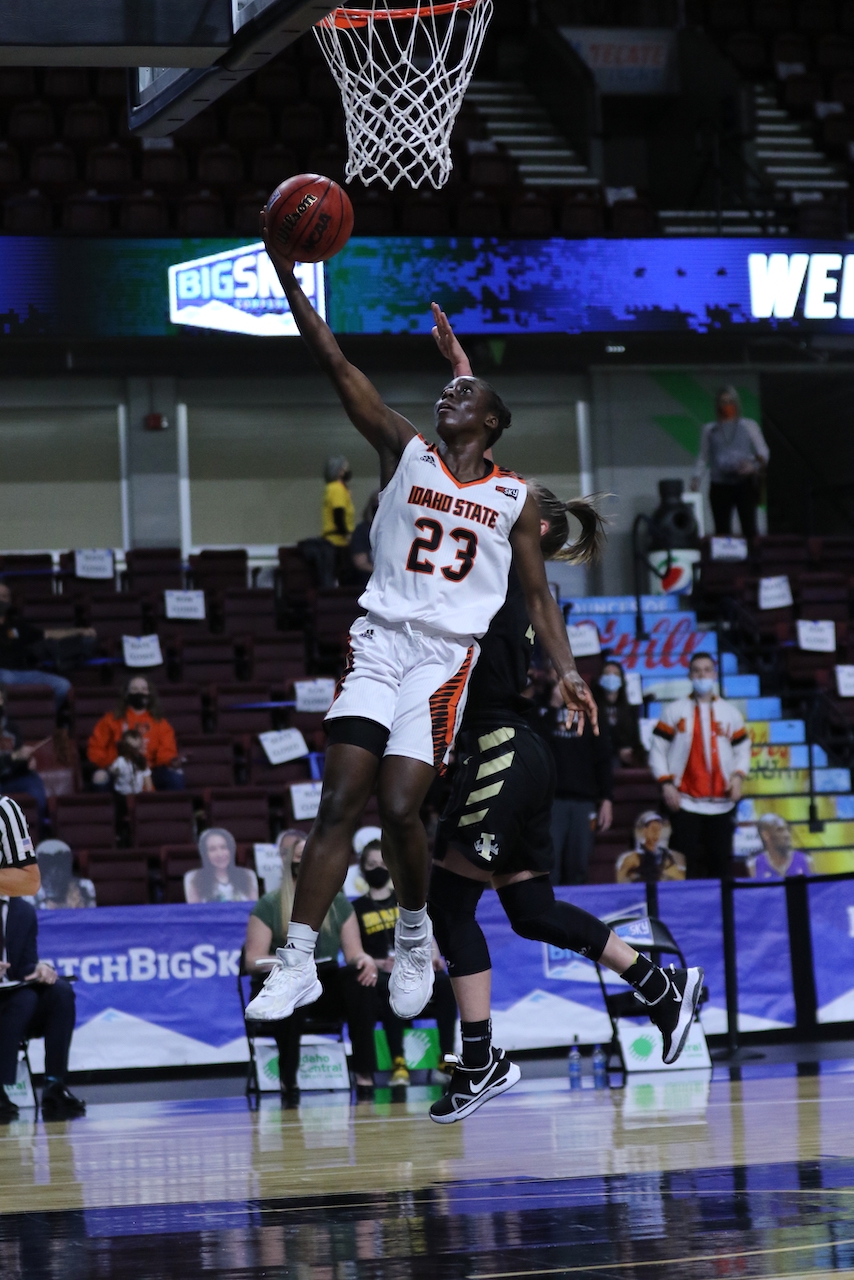
Pat Riley considered winning back-to-back titles one of the most difficult things to do in sports. Teams get a target on their back. They lose the luck that contributes to every championship. Expectations become overwhelming. Riley famously coined the term “the disease of more” to describe the issues that naturally and inevitably infect title teams – the selfishness slowly seeping in, the slight re-focusing on individual instead of team goals, the infinitesimal loss of drive that comes with repeating something you’ve already accomplished.
Also, it’s just really freaking hard to win even one title, especially in a single-elimination format like the Big Sky tournament.
By repeating as regular-season champions, Idaho State has already accomplished something that’s only happened once in the last decade in Big Sky women’s basketball (Montana State in 2015-16 and 2016-17, although the latter was shared with North Dakota).
If the Bengals repeat as tournament champions, they’ll be the first team to pull it off since Robin Selvig’s Montana Lady Griz in 2008 and 2009. Uniquely among many of the teams that have tried since then, ISU returned almost its entire roster thanks to the NCAA granting everyone an extra year of eligibility post-COVID. The Bengals were unanimously picked as the preseason favorite in the conference.
“It’s a huge advantage,” Idaho coach Jon Newlee said. “There is no doubt about it when you are that old, and that was always going to be the case if the NCAA gave the year back to people. If people were going to stay and play for your sixth year, you have 23-, 24-year-olds playing against 17-, 18-, 19-year-olds. In any sport, that’s a huge advantage.”
In hindsight, when teams are holding up a trophy and posing for pictures, it can seem like their path to a championship was destined. But building a title team, even if you do everything right, is hard, and every successful season, even one as dominant as Idaho State’s a year ago, is subtly influenced by years of luck – things that went right, things that could have gone wrong but didn’t, things that seemed like they went wrong at first but actually turned out to be exactly what was needed.
The Bengals are no different. There are plenty of examples, like the ACL injury that rerouted Croatian point guard Dora Goles from her commitment to a D-III school in Maine to junior college in Wyoming, where she landed on ISU’s radar. Or the fact that athletic wing Tomekia Whitman, who was named first-team all-Big Sky on Monday, played on a high school team with Stanford stars Lexie and Lacie Hull, which likely kept her from being noticed and recruited by higher-level schools.
Maybe the best example came in December 2019, when Callie Bourne’s flat-footed, banked 3-pointer took the Bengals to overtime against Arizona State, leading to Ors’ knee injury in the extra period.
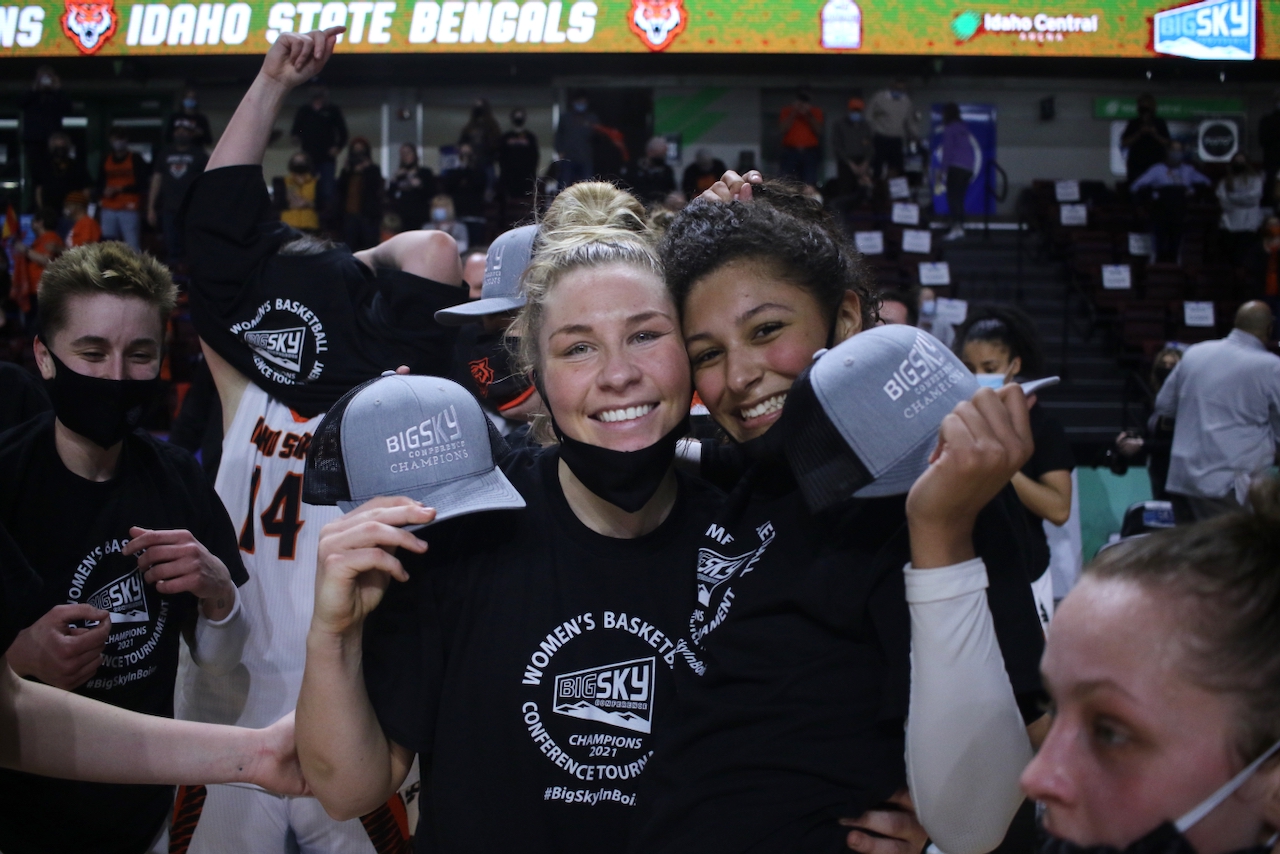
If Ors hadn’t suffered her injury a few games before she became ineligible to take a medical redshirt, her career would have been over.
Instead, her absence forced Goles, coming off a year-long knee injury of her own, to step up and become the focal point of the offense instead of just a facilitator (and if Goles hadn’t had to spend the first part of her rehab from that injury doing nothing but shooting, she might not have developed the deadeye stroke needed to take over that role). Goles went on to average 12.7 points, score 36 in a win against Montana, set the school record for 3-pointers in a season and be named second-team all-conference.
Other, younger players flourished with increased responsibility after Ors went down, pushed to expand their limits out of necessity.
Bourne’s averages jumped from 4.1 points and 3.6 rebounds as a freshman to 12.0 points and a team-leading 6.6 boards as a sophomore.
Lightning point guard Diaba Konate, who hails from France, started to harness her physical gifts, carried the Bengals to a wild comeback win with 32 points in a game at Northern Arizona and ended up averaging nearly 10 points a game in her redshirt freshman season.
Whitman jumped right into the college game, averaging 8.5 points before missing the back half of the season with an injury, and sophomore Montana Oltrogge became a sharpshooting sixth man, raising her scoring average from 3.8 to 8.0 and torching Southern Utah for 24 points in the quarterfinals of the conference tournament.
Despite losing the only proven player on the team before conference play started, the Bengals finished 18-13 (13-7 in the Big Sky) and earned a bye before running out of gas in the semifinals of the Big Sky tournament, losing 66-51 to Idaho the night before the tournament was canceled due to COVID.
Then they got to add Ors, who had her medical redshirt approved by the NCAA, back into that lineup the next year and steamrolled to a championship.
That’s the luck that makes legendary teams – not the bounce of a ball in one game, but random strokes of fortune that, if you’re willing to work hard and take advantage of them, click things into place like the inner workings of a Rolex.
All of it made the Bengals into a glorious machine last year – experienced and talented, devoted to Sobolewski’s hard-nosed defensive identity but with years of chemistry and high-level basketball IQ at every position that also made them a devastating offensive team.
“For No. 1, they are super consistent on both ends of the floor,” Montana State coach Tricia Binford said. “They are always going to have consistent defense and they have never had just one kid who they have to rely on. And they continue to have kids who still hit big shots in late-game situations.”
But if last year was a walk in the park for the Bengals, this year has been a hard-edged, resolute, attritional climb towards a frozen, wind-swept summit.
Goles, Konate, Ors, Bourne and the starting center tandem of Ellie Smith and Delaney Moore combined to play 154 of a possible 156 games a year ago.
This year, all but Ors and Smith have missed time – Konate with a knee injury at the beginning of the season, Goles with a hurt finger in the middle of the year, Bourne with a shoulder issue during the stretch run.
Losing Moore, the only contributor from last year who elected not to return, has had ripple effects even though she was the fifth-leading scorer and fourth-leading rebounder on the championship squad. The Bengals tried to plug the gap by bringing in Colombian forward Ivanna Murillo from San Diego State, the first Division-I transfer in Sobolewski’s 17-year tenure, but have struggled to replace Moore’s toughness and physicality on the defensive end and pick-and-roll chemistry with Goles and Konate on offense.
Idaho State lost 91-34 to Oregon in the second game of the season, struggled through a four-game non-conference losing streak in which they scored fewer than 50 points three times, and needed overtime to beat NAIA Carroll College (Montana).
The Bengals still won the regular-season Big Sky crown with a 15-5 record, spurred by a seven-game winning streak that coincided with Konate’s return, but a year after their only conference losses were to second-place Idaho and third-place Montana State, they’ve dropped games to seventh-place Sacramento State and eighth-place Northern Colorado. They needed some clutch shooting from Oltrogge and Goles to beat four-win Portland State 67-64 on senior day just a week before the tournament, and their scoring margin has dipped from an unholy 12.5 points per game a year ago to under four points.
“The road has actually been pretty bumpy,” Sobolewski admitted in early February. “We’ve had several injuries, a lot of people in and out. Nothing career-ending, obviously, but just people being out three weeks here, four weeks there … and yeah, it’s definitely tough.”

In a way, that’s not surprising at all. Idaho State’s opening tournament matchup against Northern Colorado on Tuesday will be Ors’ 169th career game, 45 more than anyone else in ISU history.
The Bengals have been through two years of grinding, two years of high expectations and being hunted by everyone in the Big Sky, all in the stress of the pandemic.
Multiple people around the team have suggested this week that the reason they’ve slipped, even if only slightly, from last year is simple – they’re tired. They’re banged up. They’ve been sprinting for two years, and they’re running out of road.
They’re also three wins away from making all of that not matter.
“We’re just taking it a game at a time, you know, and that again sounds cliche, but we try not to look too far down the road,” Sobolewski said. “We just want to try to play well and win the next game and see where that leads us by the end of the year. We don’t even talk about, we’re the defending champs and we have to do this, we have to do that. We just, you know, play basketball, play the next game and try to win.”
Photos by Brooks Nuanez. All Rights Reserved.

